English Heritage sites in Devon
Planning a day out in Devon? Whether you're visiting from overseas, taking a staycation or just looking to discover somewhere new to you for the first time, consider visiting one of English Heritage's diverse sites across the county.
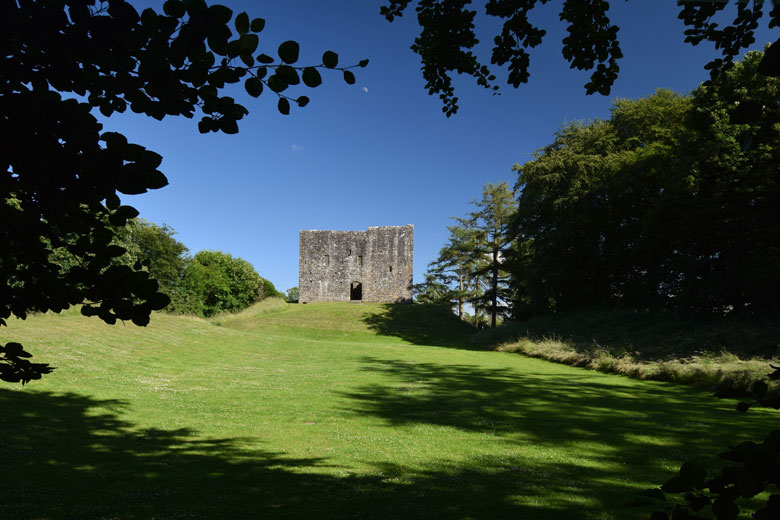
While history lies at the heart of sites maintained by the charity, you don't have to be deeply into the subject to enjoy exploring attractions such as medieval castles and Roman ruins.
Fancy becoming a member? Check out membership options for English Heritage*, which includes unlimited access to properties and sites throughout England.
Where should I visit in Devon?
We've gathered together the 13 properties and sites that English Heritage manage and/or maintain across Devon to help you plan where to go. We've (albeit roughly) broken them down into prehistoric sites, castles and forts, and architecture and interiors so you can easily see what types of sites you can choose from.
Prehistoric sites
- Blackbury Camp
- Grimspound
- Hound Tor Deserted Medieval Village
- Merrivale Prehistoric Settlement
- Upper Plym Valley
Blackbury Camp
- Address: Southleigh, Colyton, EX24 6JE
- Entry: free for all
- Parking: free
- Facilities: none
- Dogs: welcome on leads
The Iron Age hillfort of Blackbury Camp* dates from the 4th century BCE and is believed to have been in use for several hundred years. Where impressive ramparts once stood, today the site sits within woodland with earthworks the only tell-tale signs of this bygone settlement. Pack your imagination and go with a picnic for a country walk in the great outdoors.
Grimspound
- Address: Postbridge, Yelverton, PL20 6TB
- Entry: free for all
- Parking: free but limited
- Facilities: none
- Dogs: welcome on leads
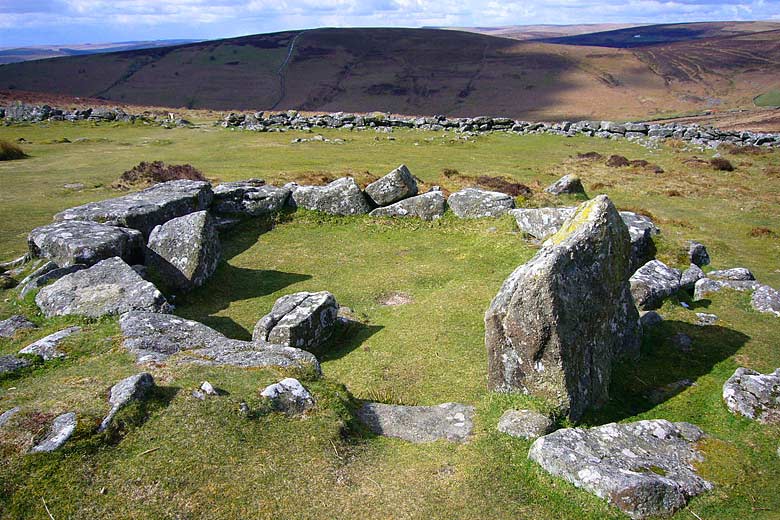
Grimspound* is the most well-known of the numerous prehistoric sites located on Dartmoor, thanks, largely, to its scale. A Bronze Age settlement, you'll see the stone remains of 24 roundhouses all enveloped within one main boundary wall. If you can, make for Hookney Tor or Hambledown for the best views of the site from above.
Hound Tor Deserted Medieval Village
- Address: Manaton, Newton Abbot, TQ13 9XG
- Entry: free for all
- Parking: free but limited; half a mile walk
- Facilities: none
- Dogs: welcome on leads
We're sneaking Hound Tor Deserted Medieval Village* into the prehistoric section as the original site dates from the Bronze Age. It is thought that the last settlement existed until the medieval period when it was deserted around the 15th century.
The remains visible today date from the 13th century and clearly show the outline of stone longhouses, in which families and animals lived together at separate ends. Scramble to the top of nearby Greator Rocks for a splendid view of the abandoned village.
Merrivale Prehistoric Settlement
- Address: Merrivale, Princetown, Yelverton, PL20 6ST
- Entry: free for all
- Parking: free but limited
- Facilities: none
- Dogs: welcome on leads
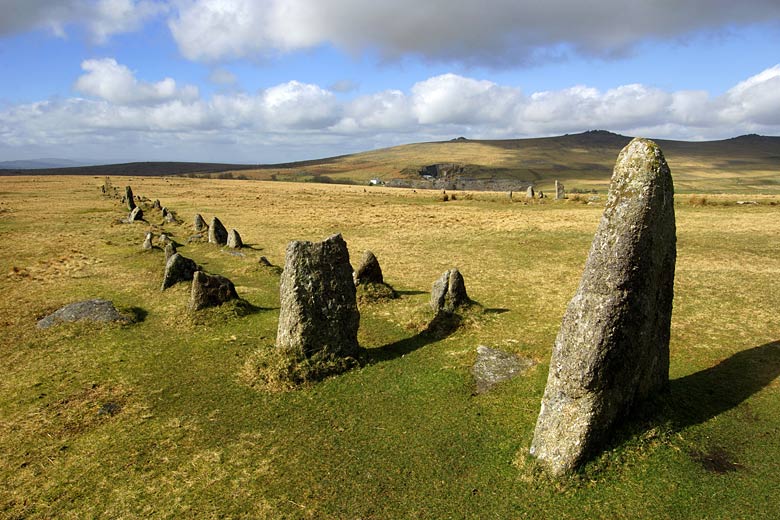
Discover one of Dartmoor's most diverse collections of prehistoric remains that are believed to date from between 2,500 BCE and 1,000 BCE. At Merrivale Prehistoric Settlement*, you'll find Bronze Age relics including ritual sites, a stone circle and standing stones.
Upper Plym Valley
- Address: Dartmoor, PL7 5EJ
- Entry: free for all
- Parking: none
- Facilities: none
- Dogs: welcome on leads
The Upper Plym Valley* is home to one of Dartmoor's most concentrated collections of archaeological finds with around 300 standing stones and remains dating from both the Bronze Age and medieval period. They cover an area of around six square miles, giving you plenty of space to explore the wild, barren landscape for yourself.
Castles & forts
- Dartmouth Castle
- Bayard's Cove Fort
- Berry Pomeroy Castle
- Lydford Castle and Saxon Town
- Okehampton Castle
- Royal Citadel
- Totnes Castle
Dartmouth Castle
- Address: Castle Road, Dartmouth, TQ6 0JN
- Entry: free for members; fee for non-members
- Parking: nearby, for a fee
- Facilities: tearoom, shop, toilets, picnic area
- Dogs: welcome on leads
Dartmouth Castle* is said to be one of the most stunningly located fortresses in England. Along with its counterpart, Kingswear Castle across the river, it has guarded the entrance to the Dart Estuary for some 600 years. There was, for a period of time, even a chain stretched between the two castles to safeguard the estuary from enemy ships.
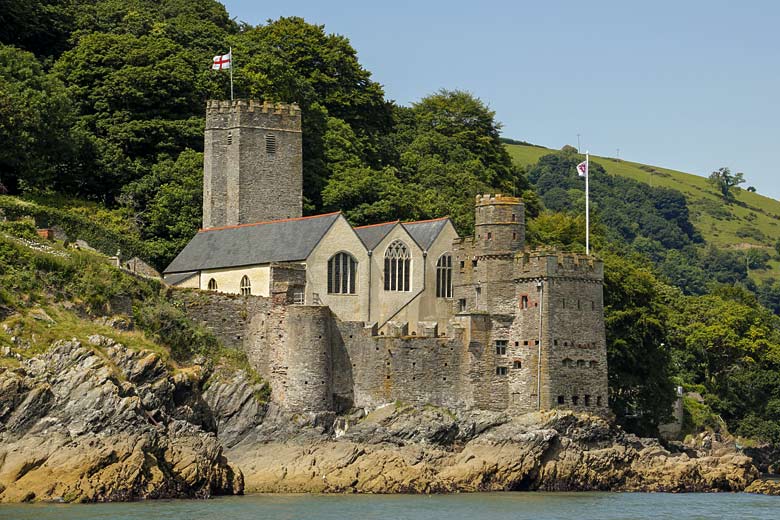
Building work on this fascinating complex began in 1388 while additions such as a gun tower dedicated to sinking ships with heavy cannon, a Victorian battery and its own church were subsequently added.
The fortress saw action during the Civil War and remained in service until WWII. It is a wonderful place to explore with everything from the views at the top of the battlement to the ferry boat that offers coastal rides from the castle ensuring it's a fun day out for all the family.
Bayard's Cove Fort
- Address: Bayard's Cove, Dartmouth, TQ6 9AX
- Entry: free for all
- Parking: nearby, for a fee
- Facilities: none
- Dogs: not allowed
Situated at the entrance to Dartmouth Harbour, just north of Dartmouth Castle, Bayard's Cove Fort* was the last line of defence against enemy ships looking to attack the wealthy port of Dartmouth.
Constructed between 1522 and 1536, it was built into the rock on the bank of the River Dart. Stroll inside the walls to get a feel for the remaining solid stone structure, which also offers some pretty good views across the water.
Berry Pomeroy Castle
- Address: Berry Pomeroy, Totnes, TQ9 6LJ
- Entry: free for members; fee for non-members
- Parking: yes
- Facilities: The Castle Café, shop, toilets, picnic area, free audio tour on request
- Dogs: welcome on leads
Walk among the imposing ruins of the Elizabethan mansion that was the family home of the Seymours. Wrapped in a 15th-century wall, the bulk of Berry Pomeroy Castle* that you see today was originally constructed in 1560. It was then subject to an ambitious development in 1600, which was hoped to make it one of the finest, most impressive houses in all of England.
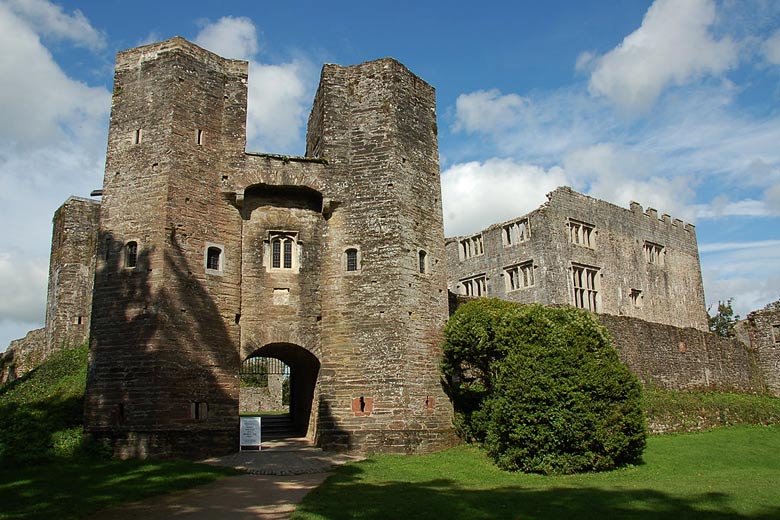
These works, however, were never completed and the great house was eventually abandoned in 1700. It has since become the backdrop for hauntingly good ghost stories, many of which are re-told in the castle's audio tour.
Lydford Castle and Saxon Town
- Address: Lydford, Okehampton, EX20 4BH
- Entry: free for all
- Parking: yes
- Facilities: toilets in the car park open May to October
- Dogs: welcome on leads
The site of Lydford Castle* has three main attractions: firstly, there's the unmissable 13th-century tower which looms on a high mound, initially built as a prison that became one of the area's most notorious.
Secondly, earthworks indicate the site of a former Norman castle and, thirdly, there's a series of Saxon-era town defences. Discover all three of these on a visit to this scenic site on the edge of Dartmoor.
Okehampton Castle
- Address: Castle Lodge, Okehampton, EX20 1JA
- Entry: free for members; fee for non-members
- Parking: yes
- Facilities: small café with snacks and cold drinks, toilets, shop, picnic area, free audio tour on request
- Dogs: welcome on leads
A visit to Okehampton Castle* will take you among the ruins of the largest castle in Devon. It began life as a Norman motte and bailey style defensive castle before being transformed into a plush residence by Hugh Courtenay, Earl of Devon, in the 14th century.

Sadly the last Courtenay got on the wrong side of Henry VIII and the castle fell into disrepair from 1539. Set in woodland above the River Okement, the ruined castle is a delightful place to unfurl a blanket, enjoy a picnic and take in surrounding nature.
Royal Citadel
- Address: The Hoe, Plymouth, PL1 2PD
- Entry: £10.00 for all; no concessions; guided tours only, must be booked in advance
- Parking: limited, nearby, for a fee
- Facilities: none
- Dogs: not allowed; guide dogs only
The Royal Citadel* is a fascinating attraction that is still used by the military today. This 17th-century fortress was built to defend the English coast from the Dutch and has witnessed countless significant events throughout history.
Book your guided tour to be walked and talked through centuries of history both within the fort's walls and out in Plymouth Sound and the Channel beyond.
Please note: there are strict security guidelines regarding entry. You can only enter on a guided tour and this must be booked in advance.
Totnes Castle
- Address: Castle Street, Totnes, TQ9 5NU
- Entry: free for members; fee for non-members
- Parking: limited, nearby, for a fee
- Facilities: soft drinks, small shop, picnic benches
- Dogs: welcome on leads
You can't miss the appealing curves of Totnes Castle*, which perches on top of a steep mound above the town. Originally a Norman motte and bailey construction, the curtain wall you see today dates from the 14th-century. It's an excellent spot to take in the views of the surrounding area.
Architecture & interiors
Kirkham House
- Address: Kirkham Street, Paignton, TQ3 3AX
- Entry: free for all; limited opening times
- Parking: nearby, for a fee
- Facilities: none
- Dogs: not allowed
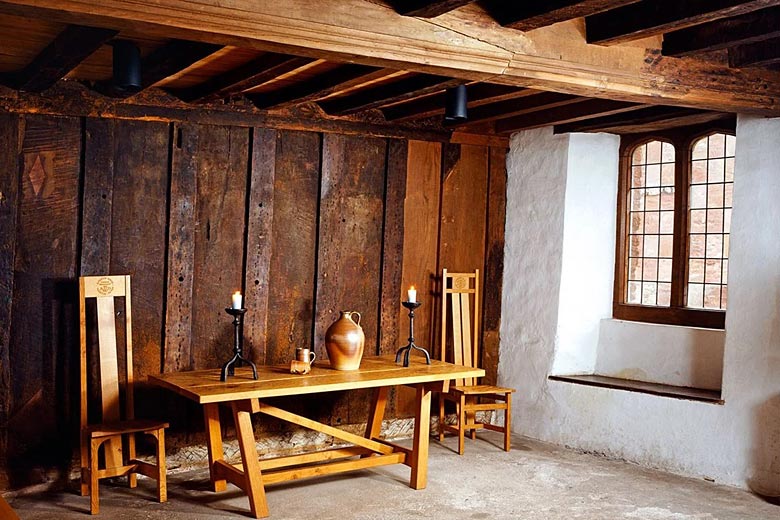
Step back in time at this well-preserved late medieval home in the town of Paignton. Thought to have been inhabited by a relatively prosperous family, perhaps merchants or landowners, Kirkham House* has an impressive hall and decorative details that showcase the craftsmanship of the day.
English Heritage - Devon location map
Weather in Devon
| Jan | Feb | Mar | Apr | May | Jun | Jul | Aug | Sep | Oct | Nov | Dec | |
|---|---|---|---|---|---|---|---|---|---|---|---|---|
| Maximum daytime temperature °F |  46 46 |
 46 46 |
 50 50 |
 54 54 |
 59 59 |
 64 64 |
 68 68 |
 68 68 |
 64 64 |
 59 59 |
 52 52 |
 48 48 |
| Hours of sunshine (daily) | ||||||||||||
| Days with some rainfall |  19 19 |
 15 15 |
 16 16 |
 14 14 |
 14 14 |
 12 12 |
 11 11 |
 13 13 |
 13 13 |
 16 16 |
 18 18 |
 18 18 |
| Sea temperature °F |  50 50 |
 48 48 |
 48 48 |
 48 48 |
 52 52 |
 55 55 |
 61 61 |
 61 61 |
 61 61 |
 59 59 |
 55 55 |
 52 52 |
The above guide shows the average weather conditions in Torquay. You can find out more about the weather in Devon in our complete guide to the county.
Why not become a member? Check out the latest deals on English Heritage membership and join today.
Be inspired
Get your weekly fix of holiday inspiration from some of the world's best travel writers plus save on your next trip with the latest exclusive offers
We promise not to share your details
Explore holidays in the sun for less
- Beach holidays
- Family holidays
- City breaks
- Summer holidays
- Winter sun holidays
- Holiday offers
- Top travel brands
- Airlines & flights
- Discount hotels
- Airport parking deals
- TUI
- Jet2holidays
- easyJet holidays
- Love Holidays
- January sales
Airport parking
- Manchester Airport
- Stansted Airport
- Bristol Airport
- Luton Airport
- Birmingham Airport
- Edinburgh Airport
- Gatwick Airport
- Glasgow Airport
- Newcastle Airport
Airport lounges
- Manchester Airport
- Birmingham Airport
- Bristol Airport
- Edinburgh Airport
- Glasgow Airport
- Heathrow Airport
- Newcastle Airport
- Stansted Airport
- Gatwick Airport


 Places to visit
Places to visit




